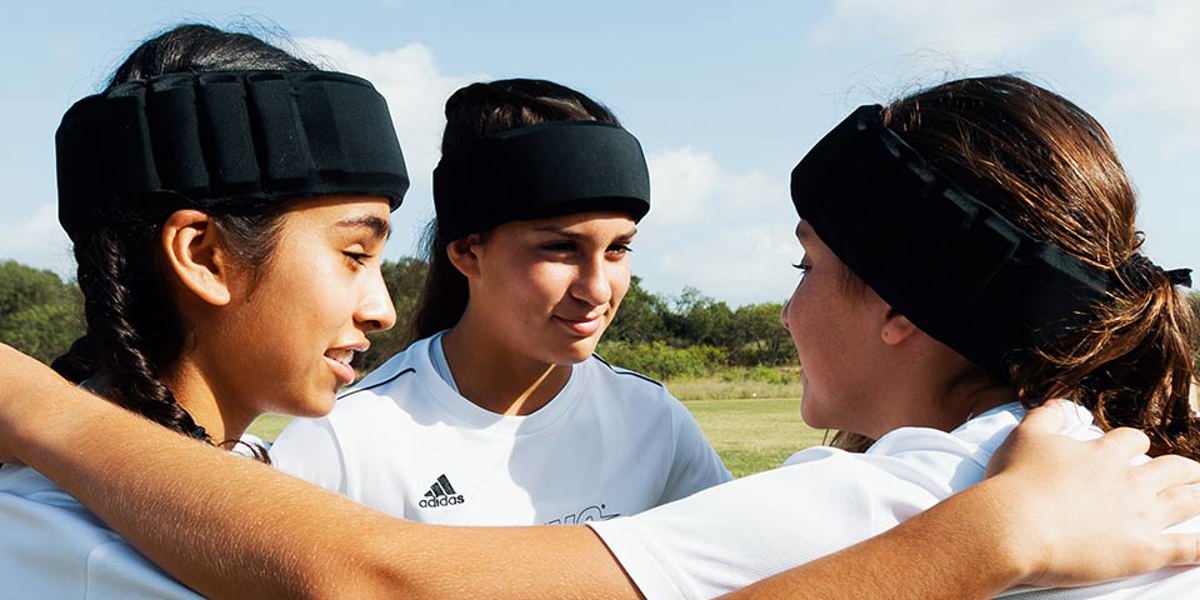Keeping kids safe on the pitch

The 2019 FIFA Women’s World Cup was a spectacular global showcase for soccer.
The U.S. team outshone all others on the pitch, but the tournament as a whole – and the final in particular – exposed the ever-present risk of head injuries in the sport.

In front of 58,000 spectators and tens of millions watching on TV, Lieke Martens of the Netherlands and Kelley O'Hara of the U.S. were left prone on the turf after a clash of heads.
Both were allowed to play on following treatment, but O’Hara had to be withdrawn later – leading some observers to call into question the consistency of the sport’s concussion protocols.
“Soccer must learn from other sports,” says Mike Juels, founder and CEO of sports head protection specialist Gamebreaker. “The decline in participation in football in the U.S. is in large part due to media coverage and parental concerns around brain trauma.
“Heading the ball is a key part of soccer and can’t be removed but to pretend there isn’t an issue around both collisions and cumulative sub-concussive impacts is foolish. We will see how the sport’s authorities respond.”
The results of the 2018 Einstein Soccer Study of American amateur players showed that women are more vulnerable than men to concussion from heading the ball.
Another 2018 study, of 3,000 players by the University of Wisconsin-Madison, found that girls’ soccer and football have a nearly identical concussion rate, with 20 per cent of players sustaining two or more concussions across both sports.
Picking up on these findings, this year’s first-ever FIFA Women’s Football Convention saw United Nations Under-Secretary-General, Phumzile Mlambo-Ngcuka, suggest that players hold each other and coaches accountable for head trauma during play.
In response, a new program at Boston University called SHINE (Soccer, Head Impacts and Neurological Effects) will follow 20 former female players aged 40 and older to learn more about brain injury and the potential degenerative effect of playing a contact sport.
A safe way to play
Protective headgear is already compliant with soccer world governing body FIFA’s regulations. In the Virginia Tech Helmet Lab’s first-ever ratings for soccer protective headgear, released in 2018, the Gamebreaker Pro 2018 with D3O impact protection was 5-star rated for its ability to reduce linear and rotational acceleration of the head resulting from head-to-head impacts.
Yet Juels believes aesthetic considerations may explain pushback on cap-style headgear covering the whole head. “It looks too much like safety,” he says.
Headband protection may overcome this perception. Gamebreaker’s newly launched AURA Soccer Headband is 5-star rated by Virginia Tech and, according to Mike, the number one rated headband in the world.
It has already attracted the attention of major retailers nationwide. While such statistics are extremely important, Juels believes the true test is out on the pitch: “We want to say to parents ‘there’s a safe way to play’, whether that’s soccer or football, then let the results speak for themselves.
“You can only do so much in the lab. We’ve seen this with our football headgear and we’re going to see the same with soccer.”

Spreading the message
Juels' confidence stems from the way in which a culture of player safety has continued to develop in football: “For many years there were few or no restrictions on contact in training and youth leagues. Now we are seeing a far smarter approach to football at every level.
“If you’re talking to a mom or dad, it’s all about safety. To an administrator, it’s about exposure and liability. To a coach, it’s all these things – plus wins and losses. Coaches are realizing that player health is directly related to wins and losses.”
At Rice University, celebrated head coach Mike Bloomgren has introduced strict head safety protocols along with mandatory Gamebreaker headgear.
“He asks his players to look up and see the people they are trying to become,” says Juels, “and encourages them to practice as the professionals do.”
Juels credits the Texas State 7on7 Organization for moving towards mandatory soft-shell helmets for players in state qualifying tournaments in 2019.
He also praises the Texas Youth Football & Cheer Association (TYFA), one of the largest tackle leagues in the U.S. with more than 10,000 participants, for working with Gamebreaker to develop a three-year roadmap that will limit padded/contact practices to one per week and mandate soft-shell headgear for flag divisions and 7v7.
This message is spreading nationwide. Greg Legore, Equipment and Logistics Director for the near-50-year-old Conejo Youth Flag Football Association in California, says: “Helmets themselves cannot promise a concussion-free game, but protection gives peace of mind.
Parents like soft-shell helmets because they are lightweight, easy to carry and easy to clean. Coaches don’t have to worry about trying to snap a chinstrap for the younger players. The Velcro fastener makes it easy for children to use and they stay fastened.”
“You have to create a culture centred around player safety in all contact sports,” Juels concludes. “The younger generation are much more receptive. They’re saying: this is my body, this is my head. I’m going to need it for the rest of my life, so I’m going to protect it now.”
![Umbraco.Cms.Core.Models.MediaWithCrops`1[Umbraco.Cms.Web.Common.PublishedModels.Image]](https://cdn.d3o.com/media/1968/gamebreaker-aura-close-up.jpg?width=1996&height=1042&format=webp&v=1dbb3a6d32bd5d0)